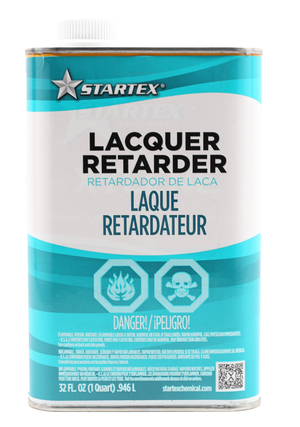I was asked by a builder last week why sometimes when his painter stains cabinets and uses a lacquer clear coat they dry to a milky white finish. I told him this is a result of moisture being trapped in the lacquer. Normally this occurs when working in high humidity or cold conditions.
How to Fix Milky Lacquer Finish
I was asked by a builder last week why sometimes when his painter stains cabinets and uses a lacquer clear coat they dry to a milky white finish. I told him this is a result of moisture being trapped in the lacquer. Normally this occurs when working in high humidity or cold conditions. The moisture can be from high humidity in the air or when using a water based stain and not allowing the proper amount of dry time. You can also cause the condensation of water on the surface by spraying when the dew point is close to the ambient temperature. The lacquer causes a cooling effect as it dries and if it cools the surface down below the dew point you get condensation which will create this white discoloration in your finish.
The good news is there's a simple fix.
Spray more lacquer!
Stay calm & don't freak out thinking you've just ruined your beautiful set of new cabinets. They are fine, this is common, the professionals call this (milkiness) blushing. Lacquer has a very quick dry time compared to most other coatings. Because of this short dry time 20-45 minutes usually, moisture has very little time to evaporate and can be trapped in the surface coating. The awesome thing about Lacquer is that each applied coat burns into it's previous coat which makes corrections easy!
FIXING THE WHITE DISCOLORATION IN 3 STEPS
1. Reduce the humidity in the room by using a dehumidifier or increasing air flow by opening doors and windows to reduce moisture trapped inside area to be sprayed in. Preferably you want the humidity as low as you can get it but most manufacturers suggest drying at 50% relative humidity or less.
2. Sand the surface with 180-220 grit sand paper and wipe clean.
3. Mix up a batch 50% lacquer 50% lacquer thinner to be sprayed. This will be 1 part lacquer to 1 part lacquer thinner. This will decrease the open time of the lacquer (dry time) but it will increase the amount of solvents applied to the surface and thus evaporating the moisture being retained in the lacquer. A quicker way would be to load your spray rig with pure lacquer thinner or retarder and spray a fog coat. This has worked for me 99.9% of the time but it is hard on the eyes so make sure you where a full face respirator when doing this.
PRO TIP: When using quick drying lacquers in high humidity environments add a retarder to your lacquer to increase the open time. This will allow the moisture a longer time to evaporate and prevent it from being trapped in the surface (blushing).

If you have any questions or issues with your coatings contact me and I will be happy to help you the best that I can!
